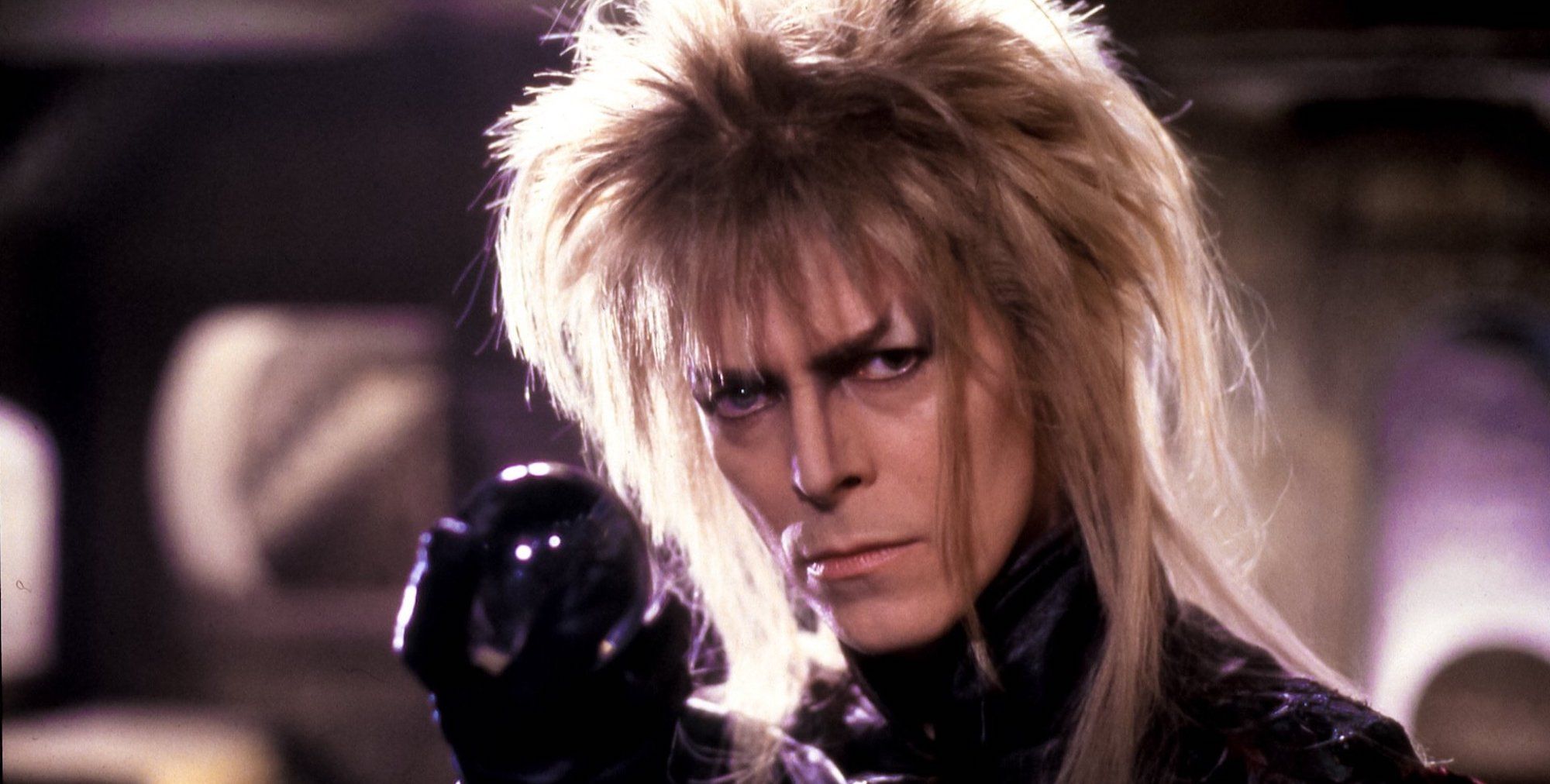When it comes to movies made for a family audience, the common expectation among them is that they are simple stories meant to entertain children and not truly engage their primary demographic. There is nothing wrong with this mindset, provided the result is still fun and entertaining enough. But we should not forget that sometimes, family audiences need to be challenged by some must-watch films that ever so slightly tap into the very real darkness in our world.
Films like Coraline, Labyrinth, and Where the Wild Things Are go beyond simply entertaining families and go as far as to disturb, frighten, and in some cases, downright traumatize the viewer to get their message across. Rather than dumbing things down and providing a completely easy answer to all of life’s problems, the people who made such films maintain the philosophy that family audiences can handle just about anything as long as they are reminded that happy endings are very possible despite it all. After all, without darkness, how would we even know that light exists?
10
‘The Hunchback of Notre Dame’ (1996)
Directed by Gary Trousdale and Kirk Wise
In 1400’s Paris, the bells of Notre Dame are wrung daily by Quasimodo (Tom Hulce), a hunchbacked, deformed, yet kind and gentle soul. After years spent cooped up in the bell tower at the request of his cruel master, Judge Claude Frollo (Tony Jay), he escapes for a day to witness the Feast of Fools festival just outside. But what begins as a quest into the outside world will soon become a battle to free the city, its people, and its sizable Roma population from corruption and oppression.
Not even the standard Disney sanitization can keep The Hunchback of Notre Dame from keeping a sense of the Victor Hugo novel’s dark tone. The story deals with persecution, the lead villain is a corrupt Christian who uses the guilt of his lust to justify hunting down an innocent woman, and the opening scene depicts the death of a woman trying to protect her baby. In some areas, the lightening of tone works to its advantage, allowing Quasimodo to become the hero of his own story while acknowledging the world isn’t as bright and fair as he thought it was.
9
‘Return to Oz’ (1985)
Directed by Walter Murch
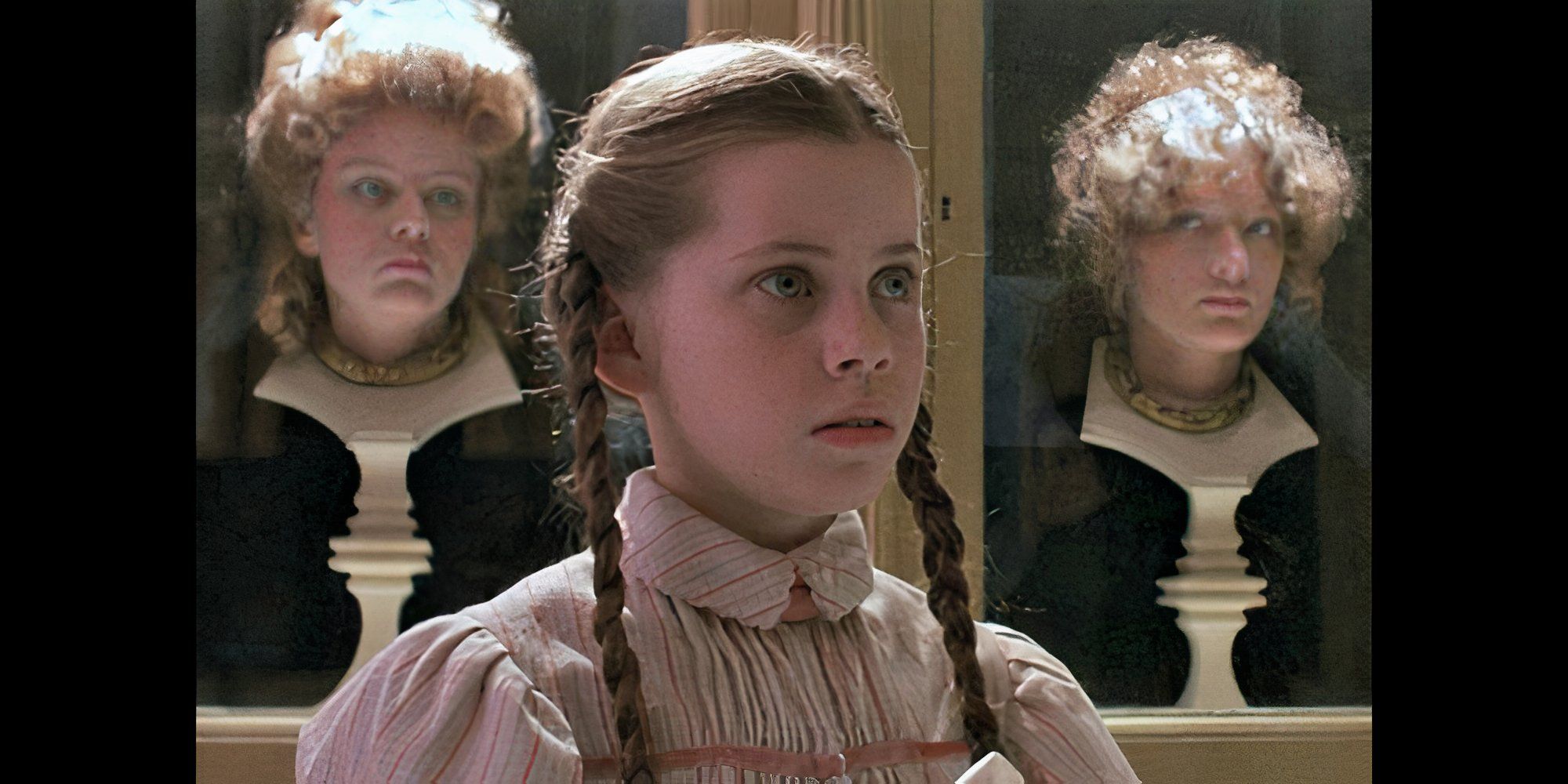
Return to Oz gives a whole new meaning to the phrase, ‘I don’t think we’re in Kansas anymore’. Dorothy (Fairuza Balk) has not stopped talking to Aunt Em (Piper Laurie) and Uncle Henry (Matt Clark) about her adventure in Oz. After a brief stay in a psychiatric ward, Dorothy and her chicken Bellina (Denise Bryer) make it back to the land over the rainbow, only to find it barren, colorless, and all her old friends either turned to stone or missing. With a new ragtag crew, Dorothy must defeat Oz’s new rulers and free all who have fallen under their spell.
Anyone expecting a charming, old-fashioned sequel to the original 1939 classic will be in for a terrifying shock. While there are emeralds, ruby slippers, and magic abound, Return to Oz has a far more sinister edge than its predecessor, thanks in no small part to its willingness to indulge the darker aspects of its source material. Still, the new characters are fun and engaging, the message is beautiful, and it still keeps its heart on display when it needs to.
8
‘James and the Giant Peach’ (1996)
Directed by Henry Selick
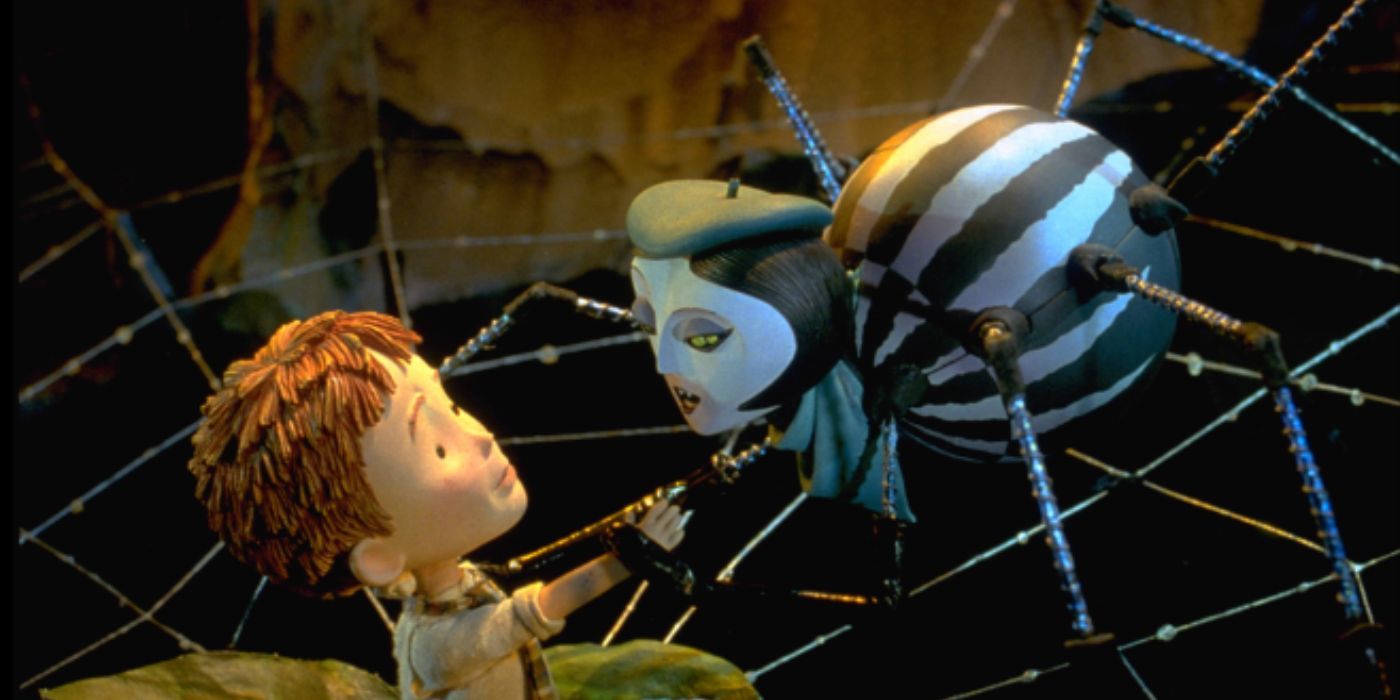
James Henry Trotter (Paul Terry) is a young boy who, to put it lightly, has been going through some tough times. His parents were eaten by a terrifying rhinoceros, and now he lives with his abusive aunts, forced to work all day and sleep in the cold all night. But his luck might just change when an encounter with a kind but mysterious man brings along a giant peach with a mismatched crew of giant talking bugs. Deciding to escape his aunts’ clutches, James and the bugs ride the giant peach to New York City so all their dreams can come true.
One of the most beloved stories from Willy Wonka author Roald Dahl, James and the Giant Peach is a decidedly dark kind of globe-trotting adventure. The title character suffers from emotional trauma, the team faces the likes of a freaky shark machine and skeleton pirates, and the rhino is depicted as some kind of eldritch monster that almost kills them all. But it does emphasize the importance of creativity, overcoming fear, and knowing that family are the ones who care and value you, not just the people you’re related to.
7
‘The Secret of NIMH’ (1982)
Directed by Don Bluth
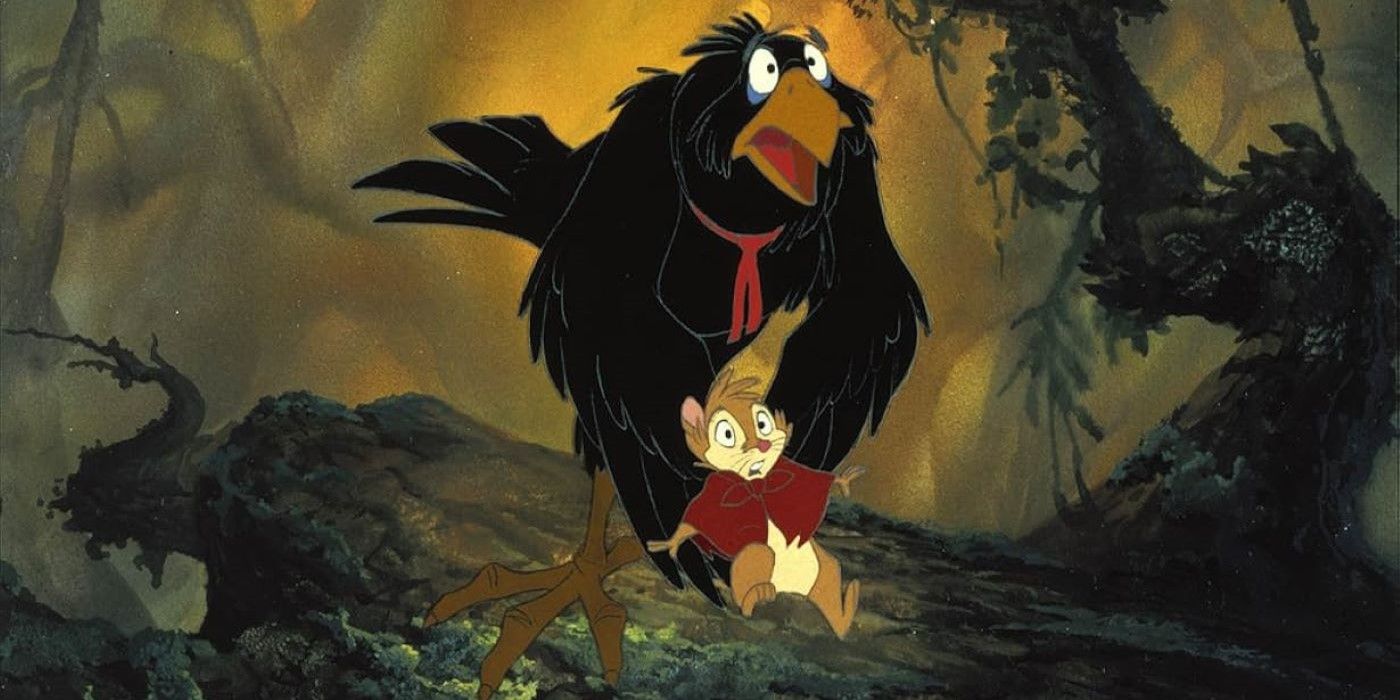
Mrs. Brisby (Elizabeth Hartman) is an anxious mouse whose youngest son Timothy (Ina Fried) has been diagnosed with pneumonia. Seeking to move her family away from the farmer’s house before plowing season comes around and find a cure for her child, she agrees to meet with some old friends of her late husband Jonathan – who just so happen to be a group of intelligent rats that escaped from a scientific laboratory and now have their own governing system. They have a plan to escape the farm, but one of the rats has a different plan for what should come next.
The directorial debut of ex-Disney animator Don Bluth, The Secret of NIMH is a quiet landmark in animation history, with a story examining grief, the responsibility of higher intelligence and the greater mysteries outside our small worlds. It’s ambitious in scope and in its themes, proving that sometimes, the most engaging and intense image one can muster is the simple image of a desperate mouse facing an owl.
6
‘The Witches’ (1990)
Directed by Nicholas Roeg
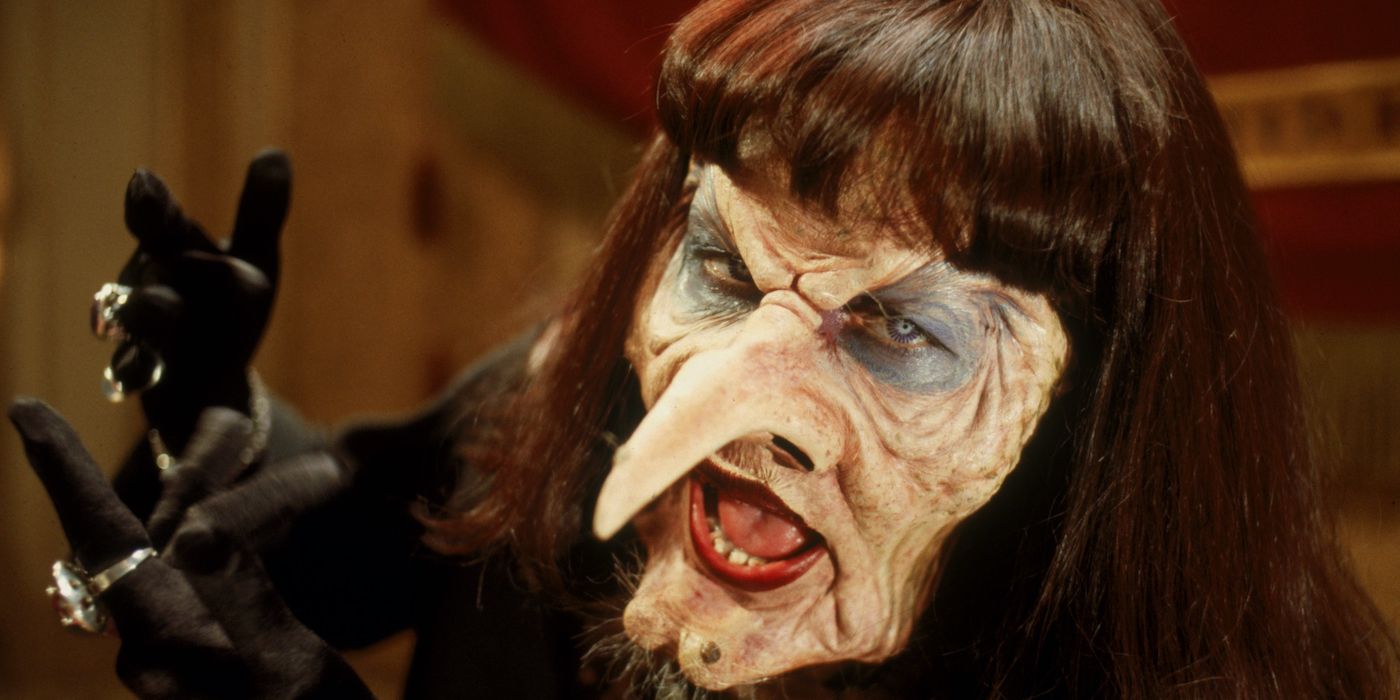
Witches – they’re real, and they hate children with the fiery passion of a thousand suns. One child unfortunate enough to cross their path is the recently orphaned Luke (Jason Fisher). When he and his grandmother (Mai Zatterling) have moved into a hotel by the seaside, they soon realize they’ve stumbled across a convention hosted by the Grand High Witch (Anjelica Huston) herself. These witches have perfected a potion to turn all the children in the world into mice in the hopes that their parents will kill them – and Luke has just become one of their first test subjects.
Based on another book by the author of James and the Giant Peach, The Witches is one of Roald Dahl’s darkest stories, depicting seemingly kind women as secret monsters that wish for nothing more than to kill as many children as possible. The special effects, makeup and overall visual aesthetic are something out of a horror movie, with even the villains’ deaths being rather gruesome.

The Witches
- Release Date
-
December 7, 1990
- Director
-
Nicolas Roeg
- Writers
-
Allan Scott, Roald Dahl
5
‘The NeverEnding Story’ (1984)
Directed by Wolfgang Peterson

Lonely, bullied young boy Bastian (Barrett Oliver) has found an old book called The NeverEnding Story. The book tells the story of a young boy named Atreyu (Noah Hathaway) and his quest to find a cure for the sick Childlike Empress (Tami Stronach) before the entire land of Fantasia is consumed by a mysterious force known as The Nothing. Atreyu faces heartache, terror, and the destruction of his home. But the only hope of saving it will come in the most unlikely of places – the very boy reading along.
The NeverEnding Story is a melancholy fable about the death and rebirth of imagination in a world that both values it and tries to destroy it. Violent monsters, heartbroken giants and the onscreen deaths of horses abound, but there are also luck dragons, a joyously triumphant ending and a sense of understated but genuine whimsy. Despite all the darkness that comes our way, The NeverEnding Story reminds us to never give up, and good luck will find us again.
4
‘Labyrinth’ (1986)
Directed by Jim Henson

Sarah (Jennifer Connelly) is a childish teenage girl struggling to deal with her new baby half-brother Toby (Toby Froud). One night, fed up with his crying, she wishes the goblin king would take him away. Much to her shock, Jareth (David Bowie), the Goblin King himself, shows up to grant her request. To get her baby brother back, he gives her 13 hours to traverse his vast, nonsensical labyrinth to find them, meeting a colorful, strange cast of characters along the way. All the while, Jareth begins to reveal his desire to love and control the girl navigating his world.
Put together with direction and puppetry from Muppet Maestro Jim Henson, a script by former Monty Python member Terry Jones, and music by rockstar legend David Bowie, Labyrinth presents pure, chaotic fantasy magic. Far looser and more humorous than The Dark Crystal, it still has higher ambitions to tell a fairy tale about a young girl’s developing psyche. It fluctuates between horrifying, wacky, romantic, and dramatic, but so is life.

Labyrinth
- Release Date
-
June 27, 1986
- Runtime
-
101 minutes
3
‘Coraline’ (2009)
Directed by Henry Selick

Based on one of the scariest books ever written for children, Coraline is another one of Henry Selick’s best. Coraline Jones (Dakota Fanning) is a young girl who’s moved into a sharehouse with her neglectful parents. Curious by nature, Coraline discovers a mysterious small door that only opens for her at night. On the other side of the door is a world full of love, joy, color, and attention missing from her own. And she can stay forever if she wants, provided she sews black buttons into her eyes.
Coraline is a dark twist on the Alice in Wonderland archetype of a young girl who falls into a magical world and learns truths about both the world and herself. In this case, she learns to appreciate what she has, because otherwise, she could have buttons sewn into her eyes and her soul devoured by a monstrous bedlam. Then again, what does one expect from the director of The Nightmare Before Christmas? With an engaging lead character and genuinely scary moments, it’s the perfect horror film for the whole family.

Coraline
- Release Date
-
February 5, 2009
- Runtime
-
100 minutes
2
‘The Dark Crystal’ (1982)
Directed by Jim Henson
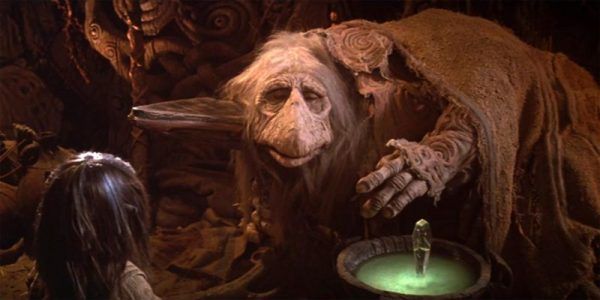
A thousand years ago, an alien race arrived on the planet Thra and experimented on a crystal. But when that crystal was cracked, the aliens were magically split into two species – the intelligent yet cruel and power-hungry Skeksis, and the docile, gentle Mystics. The Skeksis took control of the planet, slaughtering the old ruling race of Gelflings – save for two young survivors, who are prophesied to save their world from pure destruction.
The Dark Crystal is one of the most dauntingly ambitious films ever made, with a complex fantasy world populated by a cast consisting entirely of puppetry and animatronics. The comparatively simple story and dialogue allow people of any age to follow along while still tackling themes of environmentalism, genocide, and the abuses of power. Director Jim Henson makes a decidedly darker effort than his regular Muppet projects, with a serious tone, far more grotesque creations, and an epic sense of scale that makes it a triumph of darkness and wonder.
1
‘Where the Wild Things Are’ (2009)
Directed by Spike Jonze

Imaginative young boy Max (Max Records) has begun acting out due to his mother and sister neglecting him. He runs away, taking a boat to an island far beyond the sea populated by large, talking monsters called Wild Things. Initially wanting to eat Max, they quickly bow to him when he pretends to be a great king with great powers. He begins to have fun with these creatures but soon realizes they too have their own problems that he can’t really deal with either.
Based on the classic picture book by Maurice Sendak, Where the Wild Things Are takes one of the simplest yet effective kids’ stories and makes it one of the most powerful examinations of a child’s mental state. Unlike a sentimental fairytale, this film shows that even Max’s fantasy world is full of danger, fear, and sadness that can’t easily be resolved. Ultimately, Max must learn to grow beyond his wild impulses for the sake of those around him, realizing everyone around him has their own hardships to deal with.
Next: 10 Darkest Family and Kids Movies, Ranked

